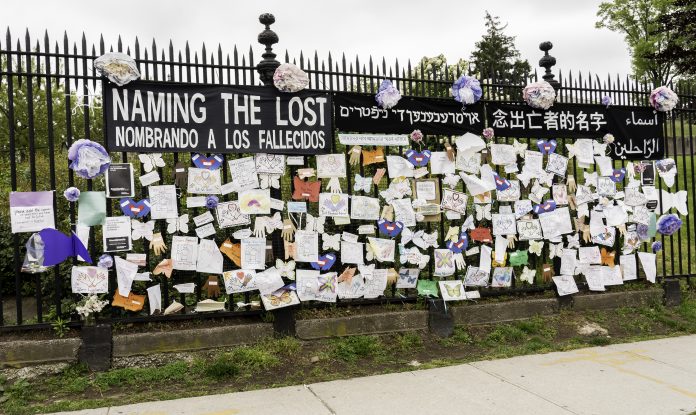A study on New York City neighbourhoods found that “neighbourhood disadvantage”, a mix of inequality measurements, is connected to a higher rate of COVID-19 cases
In both the UK and US, COVID-19 has disproportionately impacted minority ethnic communities. There were increased rates of hospitalisation and death, which functioned to highlight a state of pre-existing health inequality.
Researchers and scientists have largely focused on prevalent comorbidities, intergenerational households and working conditions that result in increased likelihood of infection.
According to Mount Sinai scientists, New York City neighbourhoods with higher levels of socioeconomic disadvantage are experiencing more virus-related deaths. To map this out, the researchers created a COVID-19 inequity index that explains what neighbourhood disadvantage really is.
‘Structural racism’ related to disadvantage, says Daniel Carrión
Daniel Carrión, PhD, MPH, first author and postdoctoral researcher in the Department of Environmental Medicine and Public Health at the Icahn School of Medicine at Mount Sinai, said: “Much of the early rhetoric around COVID-19 disparities centered on comorbidities which, due to health disparities, may have explained why communities of color were suffering higher mortality. But we were seeing more people of color getting infected in the first place.
“Our research team wanted to add to the literature outlining how structural racism is related to neighborhood disadvantage, and how that disadvantage is related to increased COVID-19 infections and mortality.”
Over a year ago in April 2020, a Boston-based study flagged a connection between race, class and COVID infections in New York.
Boston study lead author Mr. Matthew Raifman, a doctoral student in environmental health at BUSPH, commented: “In many respects, COVID-19 is the latest chapter in the book about how structural disparities shape the burden of disease in America.”
So, what is neighbourhood disadvantage?
The COVID-19 inequity index measured factors that fuelled disparities, but researchers purposefully excluded race and ethnicity from their measurements. They wanted to understand if race could be identified, purely via these other elements of inequity.
Dr. Carrión said: “Past literature shows that structural racism operates by historically sorting BIPOC people into neighborhoods that do not have the same resources and may facilitate infectious disease transmission. We wanted to see if our index reconstructed those racial disparities.”
The inequity index measured:
- Employment and commuting patterns,
- Population density of a neighbourhood,
- Food access,
- Socioeconomic status;
- And access to healthcare.
Black neighbourhoods had highest average inequity
Despite erasing race and ethnicity from their direct measurements, neighbourhood disadvantage led the team back to racial inequality.
They found that Black neighbourhoods had the highest average inequity, closely followed by Latinx communities. White neighbourhoods had the lowest level of inequity. When it came to taking public transport, places with higher inequity stats had a higher level of subway ridership – even after the State brought in stay-at-home orders.
The researchers explain that these people had less capacity to socially distance, due to their jobs as essential workers or financial worries.
‘Look at social factors’, urges senior author Allan Just
“The social factors in the COVID-19 inequity index are upstream neighborhood characteristics–they were already in place before the pandemic,” said Allan Just, PhD, senior author on the study and Assistant Professor of Environmental Medicine and Public Health at Icahn Mount Sinai.
The team propose that use of this neighbourhood disadvantage index could help policymakers to target public health interventions. Currently, the US is at a death toll of over 600,000 people despite ongoing vaccination pushes.
Just further commented: “In the near term, this speaks to the importance of place-based interventions in Black, Indigenous, and people of color (BIPOC) communities to reduce disease incidence and mortality, such as improved and targeted vaccine availability for these communities.
“This also supports the need to look at social factors in pandemic preparedness.”










